NON-BINARY MASTER POST (part 1)
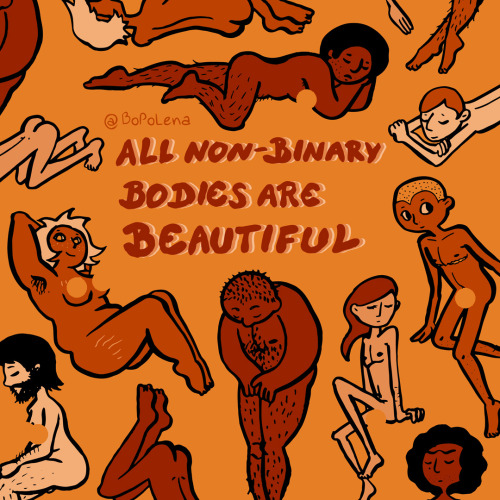
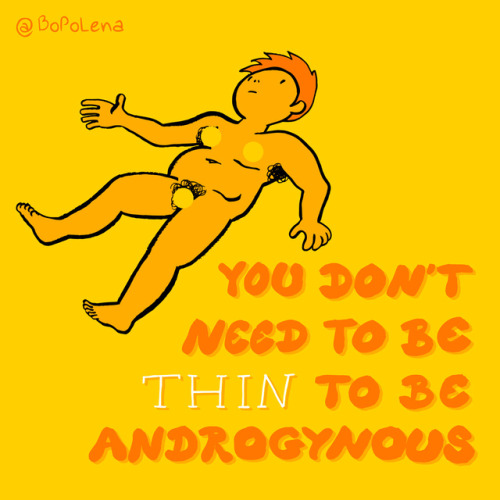

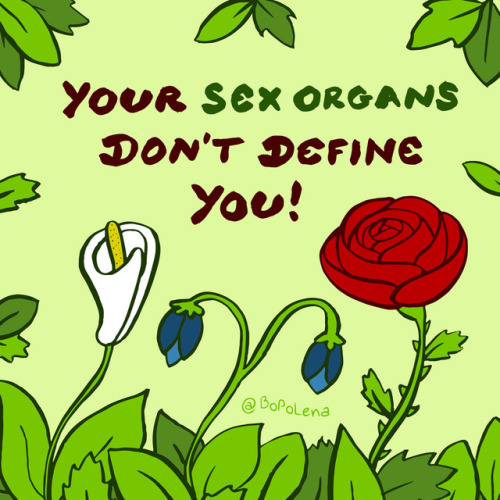
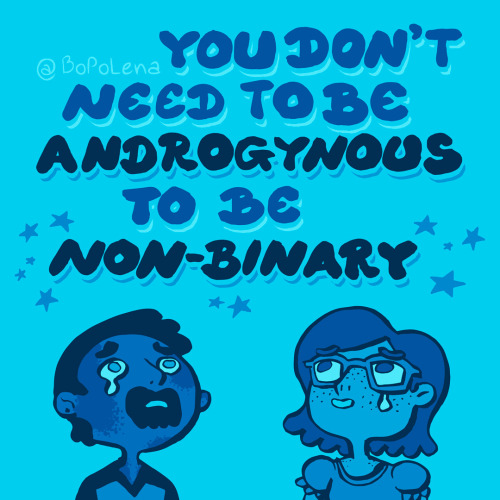
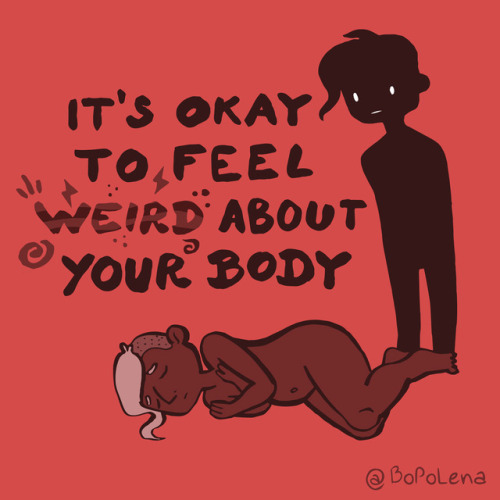
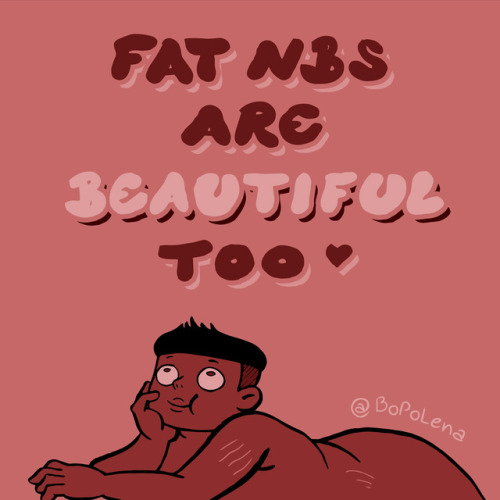



NON-BINARY MASTER POST (part 1)
[EDIT: The illustration “It’s okay to be different” is not showing someone who is binding with bandages! That would be extremely unsafe. I was trying to portrait a post-op scene.] This is a collection of all my body positive illustrations for non-binary folks I did in 2017. I hope, they help you! <3
You can find part 2 here: [LINK]
For more body positive artwork, please check out my instagram: https://www.instagram.com/bopolena/
More Posts from Purpurghost and Others
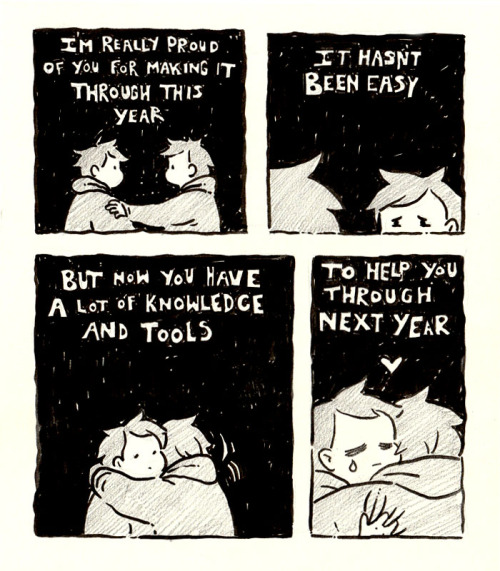
Give yourself a big hug for making it through this year.


i once again have access to a working stylus! take a celebratory napping quirrel




Anthony Boyle speaks about Scorpius Malfoy (contains minor spoilers!):
Scorpius in the beginning, has grown up in isolation in the Malfoy Manor and hasn’t really spoken to anyone in his peer group - he’s just been alone with his books. Reading about Harry Potter and Albus and all these different people… and suddenly Albus comes into the carriage and it’s the first time he’s ever really socialised with someone from his peer group without a family member/supervisor there, and so he has a bit of a panic. He just wants to be his friend immediately. Rose Granger-Weasley doesn’t take too kindly to him, thinks he’s a bit odd (because he is). But Albus quite likes him, and so the friendship begins from there. (x)
*survives the horrors by being such a silly goofy guy that my presence fundamentally changes the genre*
them: SURVIVAL OF THE FITTEST MEANS HUMANS MUST BE INDIVIDUALLY SELF-SUFFICIENT AND COMPLETELY INDEPENDENT
biologist:

Who is Nico?

Each of the nine bishops match up with a pattern on the Blurryface cover. (turned the bishop’s image to the left. East is up now.)
Keons - HeavyDirtySoul // Savarver - Tear In My Heart // Listo - Ride // Lisden - Polarize // Reisdro - Doubt // Vetomo - Lane Boy // Andre - Fairly Local // Nico - (supposedly Stressed Out) // Nills - Goner
The names are random chunks of lyrics. Example: Sacarver is taken from “she’s a carver”. All the bishops do follow this rule, all but Nico. There are no lyrics in Stressed Out that make “NICO”.
So the the first time a spotlight was shed on Nico was the cheetah gif with the phrase “U STILL DONT KNOW HIS REAL NAME DO U?” hidden between the letters N I C O in the place of spaces. We still don’t know Nico’s real name.
My two theories are:
1. Nico is hiding his true name for some reason.
2. Nico is replacing an old bishop. (Perhaps he overthrew the previous bishop. Or the old bishop died/stripped of his title and Nico was elected as the new bishop. I don’t know how Dema’s politics work lol)
I am very interested as to why Nico is called out specifically in “Nico And The Niners”. What makes him more significant than the other bishops? The only other bishop that has been name-dropped is Keons. Clancy wrote about Keons in a positive light, and the other eight he considered to be ruthless. (this could be due to Keons brainwashing his personal region or he’s possibly just not as bad of a leader as the other 8.Clancy seems to be too enlightened to believe Keons to be good if he really isn’t)
Nico may be especially ruthless and a bit of a leader among the bishops. (whether he is a new bishop or has been around a long time will be an interesting detail in the story.) That’s why Tyler addresses them as “Nico and The Niners” instead of just The Niners. Nico is leading them in the chase.
I am not sure if the cloaked man in the Jumpsuit video is even a bishop. He appears to be a direct representation of Blurryface. From his black fingers and face paint. The veil literally blurring his face, and of course the red cloak. If he is meant to be Nico (Stressed Out), we could take the line from the song “My name’s Blurryface” and perhaps that is Nico’s true identity?
Probably not, but it’s something to think about. I have gone through all the lyrics of Blurryface and none of the songs explain Nico’s name. So whether Blurryface is just Nico or a combination of all the bishops’ control would be very intriguing. I’m a believer that Tyler doesn’t portray Blurryface, but simply portrays himself “possessed” by Blurryface. So that cloaked figure might be the real Blurryface in the flesh.
Hopefully we can get more lore and letters to satisfy us till October 5th. I absolutely love the way they are telling this story and I can’t wait to read what everyone else has to say. Please add any thoughts you have! I have so many but the puzzle still isn’t complete! (totally call me out if you have plain and simple answers to any of this. I’m dumb and miss things in plain sight.)



Okay… I was kind of content to be lazy and not go into a whole thing about all this. but i keep seeing more and more reviews and reactions and such of Everything Everywhere All At Once, and so far not a one has touched on the film having distinctly Buddhist philosophies and symbolism at its roots. So I guess I'm just going to have to do this...
To start, with only lite spoilers and rearranging of film events to fit their chronological in-world order, let me first give a run down of the film's basic shtick…

Evelynn Wang is a middle aged first generation Chinese American immigrant running a laundromat with her husband, a mousey but extremely big hearted and quirky man named Waymond. When they were young, and fell in love while living in China, Waymond convinced her to move to America with him and out of disapproval of Waymond and the move in general, Evelynn's father(unnamed) disowned her. That same father, now in poor health and apprently with no other family or support left in China, has recently flown to America from China to live out the rest of his life with the daughter he disowned and the husband he disapproved of.
So, as Evelynn gets ready for both a Chinese New Years party, and a dire appointment with an IRS auditor, her (not exactly clear on age? 20s?) college dropout daughter, Joy, is also discussing introducing her girlfriend, Becky, to her grandfather —something Evelynn does not really approve of. Also, although she is not yet aware of it, her husband, Waymond, is also attempting(and thus far failing) to approach her about the subject of divorce; not to actually divorce her, but to use the possibility of a divorce to force a frank conversation about the state of their marriage, and what Waymond sees as Evelynn's long standing and growing dissatisfaction with their life together.
(Oh, and although it was technically clipped from the final script as a concrete detail, all indications from how they are characterized inicate that Evelynn and Joy struggle with undiagnosed ADHD.)
With that as the set up for the story, this overwhelming stress in her life aligns with(or perhaps in a sort of cosmic destiny sense, triggers…) her awakening to the existence of infinite parallel universes. And she is faced with the choice to either continue her mundane life as planned, or accept this call to adventure as the savior of multiple realities.
The the threat to all existence that she is the many worlds' savior from is a kind of ascendent form of her own daughter, Joy, who in another reality was pushed to excel at reality hopping by her mother to the point where she was overwhelmed by the pressure to succeed and by the infinite possibilities of the multiverse. To escape the anxiety of an all seeing existance, this villainous Joy, dubbed Jobu Tupaki, has created a kind of blackhole as a nexus of multiple realities all collapsing onto themselves.
And, finally, to avert this world ending crisis, Evelynn must learn to channel into herself, the knowledge, experience, and skills of her many other selves. She does this at first to match and challenge Jobu Tupaki, and later to understand and potentially negotiate with her.
So what does this have to do with Buddhism?

The mytho-historical origins of Buddhism are in the life and teachings of Siddhartha Gautama, generally presented as a story of a young man living an inordinately sheltered and privileged life who has an encounter with the old, the sickly, the dead, and then an ascetic.(someone in the, often but not exclusively spiritual act of self-denial; living while refusing luxury in an act of self-discipline.) These experiences are referred to as The Four Sights.
This isn't in and of itself particularly important in the context of the film, but the first 3 sights make Siddhartha for the first time aware of the difficulties of being alive; to lose youth, to lose health, and to lose life. And he becomes aware that all living things share in these experiences, and subsequently that the individual and ego driven experience is not unique. But the 4th sight, of the man in self-denial makes him aware that people can live without attachment to those things in the first place. And this begins his spiritual journey in search of Nirvana thru, among other things, meditation. And via said mediation he becomes Bodhi:"Awakened." (from which the epithet Buddha:"Awakened One" is derived.)
Okay... so without letting this spiral too out of control... What is Nirvana? Apart from an iconic Gen X rock band fronted by Kurt Cobain?

Nirvana is the state of being of having escaped from those worldly sufferings. In some, perhaps more supernatural, perspectives it can be interpreted as literal immortality, but more practically it means freedom, not from the experience of aging, but the fear of aging; If you don't value something like vanity, you don't fear its loss, and if you don't fear losing it, your life is not governed by navigating around that potential loss.
It also involves an escape from the endless cycle of death and rebirth implicit to Buddhism as a religion rooted in its preceding Hindu theology. (This same root in Hinduism is where the idea of karma comes from: the idea that what you do in one life incurs consequences in the next life, for good and for ill.) And part of the Buddha's role as an all-seeing and all-knowing figure is that he can also see his other(past) lives. This escape and the prerequisite ability to see and to understand and to empathize with all living things through your own awakening to your infinite experiences in many lives, and the universal suffering that comes with living and aging and dying, is the goal of Buddhist teaching and study; To understand your place in a much MUCH bigger picture and find peace in a life free of the push and pull of expectation and external societal pressures. That's Nirvana.
Now... In relation to Nirvana is the concept of Anatta: "The Non-self." The concept that there is no such thing as a "true self" or a "false self" and that individual identity is mutable; nothing exists in a singular finite state, least of all people. (This btw is a point of conflict for a lot of would be Buddhist scholars in the west, where it conflicts heavily with the insistence on trying to preserve or otherwise find in Buddhist philosophy some trace of the Christian "immortal soul.") And adjacent to this, the concept of Sunyata: "Emptyness"/"Nothingness."
And Sunyata is where the black circle symbolism comes from. Sunyata is literally composed of the sanskrit word for "empty/vacant/void/nothing/hollow/zero" etc… and the suffix indicating a state of being, often translated as "-like" or "as (if) __" or "-ism." In fact, the circle itself actually old enough that it shares its origins with the arabic numeral zero; It is one of the oldest and most basic human concepts of visualizing "nothing."
And it is of course the reference at the core of the Everything Bagel in Everything Everywhere All At Once. (that's right, I'm actually still talking about the movie!)

So, this is where the film actually starts its Buddhism crash course, more or less… Evelynn is caught in the endless wheel of life and suffering, or as she summarizes it, "Laundry and taxes and laundry and taxes…" And this life is disrupted by the appearance of the Sunyata, the menacing black circle Deirdre draws on one of the disputed receipts, which threatens to end everything. And indeed "Everything" is embodied in the daunting pile of receipts, in the many events taking place on this one single day, by the unspoken ADHD sensory overload, and by the existence of the multiverse itself.
Like the Buddha, Evelynn becomes aware of her other lives. But while the Buddha's understanding of the cycle of reincarnation is about past lives and their sequence, Evelynn's induction into the multiverse is the understanding of parallel lives and of alternate potentiala. This in turn manifests as what is called FOMO*(Fear Of Missing Out) a kind of jealousy and envy and anxiety that comes from feeling like you've missed your opportunities, most often triggered by seeing other people fulfilling the potentials you haven't.
*Stick a pin in this, because we'll come back to it...

So, Evelynn's path to enlightenment starts with her experiencing her other lives, but what helps move her forward is not some critical accumulation of her own experiences, it's when she realizes that the life she wants to experience, to see and understand, is her daughter's: the villain, Jobu Tupaki's experience. And she endeavors to find in that empathy some kind of peaceful resolution.
And in Buddhist art this state of heightened awareness is illustrated as the opening of the 3rd eye: The Eye of Consciousness. And the cultivation of this third eye is a core tenet of Zen Buddhism in particular; a sect of Buddhism that emphasizes self reflection thru meditation, and the contemplation and application of the Sunyata.
(There's actually a whole tangent I'm cutting here about the bodhisattva, Guanyin/Avalokiteśvara: An Indian god turned Chinese goddess, characterized as one who sees everything, who displays infinite mercy, and who has 108 different forms(including, according to the tibetan sect that revere him, the dalai lama). I think there's a definite through line here, from the Buddhist figure to Waymond to Evelynn, but it's a but much and honestly not as concrete as the rest of the symbolism at play, so I'm just tabling it...)

And it's a little less overt but the scene with the rocks over the canyon in the movie also directly evokes a meditative exercise of imagining yourself as a stone. You are stable and immobile and of sufficient size, functionally immovable; you exist in nature, as a part of nature, and in opposition to nature. You can be navigated around and over and under, and both do not disturb the scenery around you, nor are you disturbed by it, and while you may be unlike much of what is alive around you, you are none the less a part of the scene.
The emulation of a stone-like demeanor in relation to the stressors of life emphasizes that you needn't give in to the push and pull of the world around you; you don't need to capitulate to the pressures others put on you, nor do you have to assert your control over them to avoid being victimized. You can simply exist as a part of the larger picture without disturbing others or being disturbed.
(I've always attributed this to meditative buddhism in general but it turns out (I think) it was actually adopted by chinese buddhism via daoism and confusianism. The term wu-wei[無為] often translated translated as "inaction" or "action without action". Look it up for more detail, its cool stuff)

And finally the concept of Mudita: defined as joy felt on behalf of others for their own wellbeing. Opposite of things like schadenfreude and FOMO.
So, here's our return to FOMO.... I'm not sure the exact relation but the term showed up a surprising amount in interviews surrounding the film, particularly in regards to Ke Huy Quan's long absence from acting, but I get the impression this was a keyword that Daniels used during writing that spread into the way the cast talk about the film as a result. And it makes sense both in regards to the ADHD themes, the midlife crisis, and of course the resolution of the film's grappling with self-destructive nihilism.
But also, obviously, I'm sure you notice, this specific kind of "joy" is embodied directly in the character, Joy, Evelynn's estranged daughter. Because not only is the solution to Evelynn's restlessness and sense of unaccomplished life something she can overcome through the legacy of her daughter; not by her daughter's "success" in conventional means(which all context implies she has pushed her towards in the pass to the point of breakdown) but by her joy in living a self-fulfilled life. Evelynn can be happy by knowing she can allow Joy to be happy.
But also this works metaphorically, in that reconnecting with Joy means reconnecting with (sympathetic)joy. She forgot what being happy was, for herself but also for others, and by rediscovering that concept she can overcome her own dissatisfactions. And indeed the ultimate form Evelynn attains in the final fight is one of sympathetic joy, and of mercy.(see: that Guanyin theme I only briefly touched on) See used her opened 3rd eye to see the lives of other people and to grant them the joy she herself lacked and longed for, and in turn found that joy for herself. "Be kind" Waymond says, and in that kindness, that selflessness, Evelynn finds her salvation from the endless cycle of suffering of life. She becomes enlightened. She reaches Nirvana.
And this is, btw, why the film DOESN'T end with optimism and hope and individualist concepts of self-actualization and overwhleming positivity being some kind of solution to negativity and depression. And why the nihilism is non treated as synonymous with some western concept of "evil" in direct opposition to "good." Because the innately Buddhist philosophy at the roots of it is all about personal balance and being at peace with reality rather than at odds with it. And that means embracing the bigger picture, rather than trying to force it and one's self into some limited perspective of what "should" be, rather than simply what is.

Anyway that's my hectic, halfbaked rant about the specifically Buddhist backbone to this film. It is such a fascinatingly secular approach to a crash course in Buddhist philosophy, despite being so blatantly and AGRESSIVELY Buddhist in how the film embodies its philosophies.
-
 justrandomthoughtsyeah liked this · 1 week ago
justrandomthoughtsyeah liked this · 1 week ago -
 vqmpunk reblogged this · 2 weeks ago
vqmpunk reblogged this · 2 weeks ago -
 vqmpunk liked this · 2 weeks ago
vqmpunk liked this · 2 weeks ago -
 fantacoraline liked this · 1 month ago
fantacoraline liked this · 1 month ago -
 call-me-copycat liked this · 2 months ago
call-me-copycat liked this · 2 months ago -
 xeerie-fvx reblogged this · 2 months ago
xeerie-fvx reblogged this · 2 months ago -
 xeerie-fvx liked this · 2 months ago
xeerie-fvx liked this · 2 months ago -
 pudl-e reblogged this · 2 months ago
pudl-e reblogged this · 2 months ago -
 pudl-e liked this · 2 months ago
pudl-e liked this · 2 months ago -
 ghodaer liked this · 2 months ago
ghodaer liked this · 2 months ago -
 ibelivedinmyself liked this · 3 months ago
ibelivedinmyself liked this · 3 months ago -
 veluigi liked this · 3 months ago
veluigi liked this · 3 months ago -
 kobonibomibo liked this · 4 months ago
kobonibomibo liked this · 4 months ago -
 pewpewae liked this · 4 months ago
pewpewae liked this · 4 months ago -
 associate-geneva liked this · 4 months ago
associate-geneva liked this · 4 months ago -
 bloodandbasorexia liked this · 4 months ago
bloodandbasorexia liked this · 4 months ago -
 calugaritsa reblogged this · 4 months ago
calugaritsa reblogged this · 4 months ago -
 calugaritsa liked this · 4 months ago
calugaritsa liked this · 4 months ago -
 retropineapple liked this · 4 months ago
retropineapple liked this · 4 months ago -
 itz-zipper liked this · 4 months ago
itz-zipper liked this · 4 months ago -
 noctuusarts liked this · 4 months ago
noctuusarts liked this · 4 months ago -
 kayenimate liked this · 4 months ago
kayenimate liked this · 4 months ago -
 prettyscorpiosstuff liked this · 5 months ago
prettyscorpiosstuff liked this · 5 months ago -
 mama-sunni liked this · 5 months ago
mama-sunni liked this · 5 months ago -
 colorfulsaccharinecalamity liked this · 6 months ago
colorfulsaccharinecalamity liked this · 6 months ago -
 onceuponawdymitsnotcannon reblogged this · 6 months ago
onceuponawdymitsnotcannon reblogged this · 6 months ago -
 moonsp1r1t reblogged this · 6 months ago
moonsp1r1t reblogged this · 6 months ago -
 intothefandomverse liked this · 6 months ago
intothefandomverse liked this · 6 months ago -
 eta-mu liked this · 6 months ago
eta-mu liked this · 6 months ago -
 saebarantsandreblogs reblogged this · 6 months ago
saebarantsandreblogs reblogged this · 6 months ago -
 saebasanart liked this · 6 months ago
saebasanart liked this · 6 months ago -
 weareweirdpeople reblogged this · 6 months ago
weareweirdpeople reblogged this · 6 months ago -
 weareweirdpeople liked this · 6 months ago
weareweirdpeople liked this · 6 months ago -
 aph-mable reblogged this · 8 months ago
aph-mable reblogged this · 8 months ago -
 gentlelibrarian reblogged this · 8 months ago
gentlelibrarian reblogged this · 8 months ago -
 truemacabrekidbutoldlike liked this · 8 months ago
truemacabrekidbutoldlike liked this · 8 months ago -
 gentlelibrarian liked this · 8 months ago
gentlelibrarian liked this · 8 months ago -
 thecumglomerate liked this · 8 months ago
thecumglomerate liked this · 8 months ago -
 foldmorepaper liked this · 8 months ago
foldmorepaper liked this · 8 months ago -
 babyboodle liked this · 8 months ago
babyboodle liked this · 8 months ago -
 bouncing-flowers reblogged this · 8 months ago
bouncing-flowers reblogged this · 8 months ago -
 blackholefriends reblogged this · 8 months ago
blackholefriends reblogged this · 8 months ago -
 dottylittledroll reblogged this · 8 months ago
dottylittledroll reblogged this · 8 months ago -
 dottylittledroll liked this · 8 months ago
dottylittledroll liked this · 8 months ago -
 lavenderagenda liked this · 8 months ago
lavenderagenda liked this · 8 months ago -
 angelicosantos liked this · 8 months ago
angelicosantos liked this · 8 months ago -
 alltimelowsuckedmydick reblogged this · 8 months ago
alltimelowsuckedmydick reblogged this · 8 months ago
